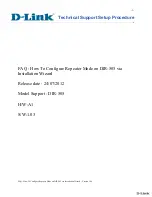
1. Reset manifold pressure. Refer to
“Operation”.
2. Replace regulator section of combin-
ation gas valve or complete valve.
3. Check with local gas supplier for
proper
ori
fi
ce size and replace. Refer
to
“Operation”.
1. Close air shutter. Refer to “Operation”.
2. Check with local gas supplier for
proper
ori
fi
ce size and replace. Refer
to
“Operation”.
1. Close air shutter.
2. Reduce pilot gas. Refer to “Operation”.
3. Replace
ori
fi
ce.
4. Reset manifold pressure. Refer to
“Operation”; Replace regulator section
of combination gas valve or complete
valve; or Check with local gas supplier
for proper ori
fi
ce size and replace.
Refer to “Operation”.
1. Open air shutters. Refer to
“Operation”.
2. Clean main burner ports.
3. Replace manifold assembly.
4. Clean
fl
ue collector.
5. Check for dust or lint at air mixer
opening and around the air shutter.
6. Clean combustion air inlet openings in
bottom panel, see “Installation”.
1. Clean
fl
ue. Refer to “Installation”.
2. Clean combustion air inlet openings in
bottom panel, see “Installation”.
3. Clean heat exchanger.
4. Determine cause and repair
accordingly.
1. Inspect all gas piping and repair.
2. Clean heat exchanger/
fl
ue.
3. Eliminate drafts. Refer to “Installation”.
4. See
“Installation”.
5. Clean
fl
ue collector.
1. Close air shutter. Refer to “Operation".
2. Clean main burner ports.
3. Reset manifold pressure. Refer to
“Operation”.
4. Supply piping is inadequately sized.
Refer to “Installation”.
5. Clean pilot ori
fi
ce. Refer to
“Operation”.
6. Eliminate drafts. Refer to “Installation”.
7. Refer to “Installation”.
1. Open all manual gas valves.
2. Replace fuse or turn on power supply.
3. Turn up thermostat.
4. Check limit switch with continuity
tester. If open, replace limit switch.
5. Check wiring per diagrams.
6. Replace gas valve.
22
SYMPTOMS
POSSIBLE CAUSE(S)
CORRECTIVE ACTION
Table 6 - Power Vented Propellers Troubleshooting Guide
1. Pressure regulator set too high.
2. Defective
Regulator.
3. Burner
ori
fi
ce too large.
1. Excessive primary air.
2. Burner
ori
fi
ce too small.
1. Too much primary air.
2. Noisy
pilot.
3. Irregular
ori
fi
ce causing whistle or
resonance.
4. Excessive gas input.
1. Insuf
fi
cient primary air.
2. Clogged main burner ports.
3. Misaligned
ori
fi
ces.
4. Clogged
fl
ue collector.
5. Air shutter linted.
6. Insuf
fi
cient combustion air.
1. Blocked
venting.
2. Insuf
fi
cient combustion air.
3. Blocked heat exchanger.
4. Air leak into combustion chamber or
fl
ue collector.
1. Shut off gas supply immediately!
2. Blocked heat exchanger/venting.
3. Drafts around heater.
4. Negative Pressure in building.
5. Blocked
fl
ue collector.
1. Excessive primary air.
2. Main burner ports clogged near pilot.
3. Pressure regulator set too low.
4. Pilot decreases in size when main
burners come on.
5. Pilot
fl
ame too small.
6. Drafts around heater.
7. Improper
venting.
1. Main gas off.
2. Lack of power at unit.
3. Thermostat not calling for heat.
4. Defective limit switch.
5. Improper thermostat or transformer
wiring at gas valve.
6. Defective gas valve.
A. Flame lifting from burner
ports.
B. Flame pops back.
C. Noisy
fl
ame.
D. Yellow tip
fl
ame (some yellow
tipping on propane gas is
permissible).
E. Floating
fl
ame.
F. Gas
Odor.
G. Delayed ignition.
H. Failure to ignite.
Содержание QVSF 100
Страница 10: ...10 Figure 6...
Страница 11: ...11 Figure 7...
Страница 12: ...12 Figure 8...
Страница 13: ...13 FIGURE 9...







































